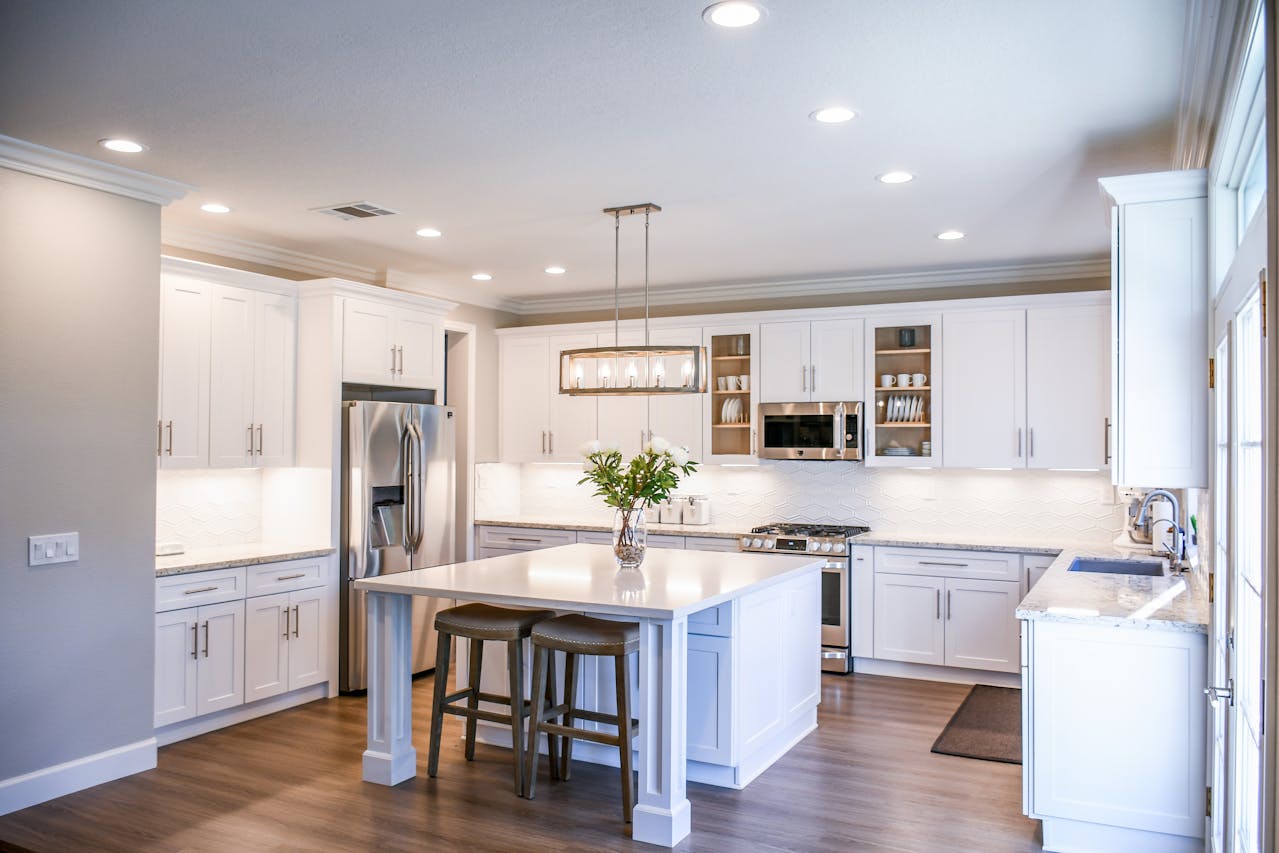When selecting the ideal flooring for your kitchen, there are several important factors to consider. Kitchens are one of the busiest spaces in any home, enduring heavy foot traffic, regular spills, and exposure to moisture. This means your flooring choice needs to strike the right balance between practicality, durability, and aesthetic appeal. It’s not just about choosing a material that looks good—it also needs to stand up to daily wear and tear.
The best floor for kitchen spaces is durable, water-resistant, and easy to clean, with options like tile, vinyl, and engineered wood being popular choices.
Here’s an overview of four popular options to help you make a well-informed decision.
Hardwood Flooring
Hardwood flooring offers timeless warmth and elegance, making it a favorite for many homeowners who want to create a cozy yet stylish kitchen. Available in a variety of wood types, stains, and finishes, hardwood can suit both traditional and modern kitchen designs with ease. Known for its durability, solid wood can handle years of use, making it a strong contender for busy families or frequent home cooks.
However, hardwood floors do require regular maintenance to keep them in top shape. Periodic sealing is necessary to preserve their resistance to moisture and potential damage from spills. Without proper care, prolonged exposure to water can lead to warping or staining. Hardwood also tends to be prone to scratches and dents, making it less ideal for households with playful pets or heavy kitchen activity, such as dragging furniture or dropping heavy cookware. Despite these considerations, many find that the elegance and long-term value hardwood adds to a property far outweigh the maintenance required. Regular sweeping, occasional mopping, and refinishing every few years will keep your hardwood floors looking fresh and beautiful for decades.
Laminate Flooring
Laminate is an excellent budget-friendly alternative that replicates the appearance of hardwood or tiles at a fraction of the cost. It offers good durability and is resistant to scratches, making it suitable for families. Its protective top layer ensures it can handle daily wear and tear, but prolonged water exposure can cause warping. Choose high-quality, waterproof laminate options for kitchens, and consider adding anti-slip pads if needed. Maintenance is straightforward, with a simple mop and vacuum routine keeping it clean and tidy.
Vinyl Flooring
Vinyl flooring has gained popularity for its versatility and practicality in kitchens. It's water-resistant, easy to clean, and feels soft underfoot, making it comfortable for long cooking sessions. Vinyl comes in a wide variety of styles, colours, and patterns to suit kitchens of all designs. Unlike some other materials, drops and spills are unlikely to damage its surface, making it a durable option. However, low-quality vinyl may lack the longevity of higher-end alternatives, so investing in premium options can ensure your flooring stands the test of time.
Tile Flooring
Tile flooring is a classic choice for kitchens due to its high durability and resistance to water and stains. Porcelain and ceramic tiles are especially popular, as they come in a range of designs and finishes, providing endless opportunities to complement your kitchen's style. Tiles are easy to clean but can feel cold and hard underfoot, so consider using soft mats or underfloor heating for added comfort. Grout lines may require regular upkeep to prevent staining. Additionally, tiles are harder and more unforgiving, so dropped items are unlikely to survive impact.
Final Thoughts
Selecting the best flooring for your kitchen depends on your priorities—whether that’s style, durability, maintenance, or budget. Each material has its strengths and limitations, so assess which option aligns with your needs and lifestyle. Whether you’re after the warmth of hardwood, the practicality of laminate or vinyl, or the resilience of tiles, your kitchen can be both functional and stylish with the right flooring choice.
